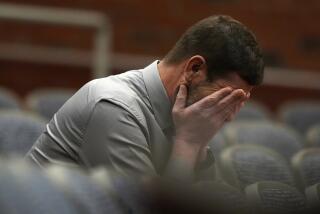Scrambling to save Holocaust memories
Fifteen years ago, nearly 52,000 Holocaust survivors and witnesses began sharing their stories with a group that would come to be known as the USC Shoah Foundation Institute for Visual History and Education. The testimonies, averaging about two hours each, were documented on videotape, a format whose quality deteriorates over time.
And that’s why the foundation, intent on preserving its Holocaust material for future generations, has launched a $10-million initiative to turn 105,000 hours of videotaped testimony into a vast digital archive.
The switch, foundation leaders say, cannot come a moment too soon -- with the videotapes expected to start decaying within five years and aging Holocaust survivors dying off.
“It’s like a ticking time bomb,” said Sam Gustman, the foundation’s chief technology officer.
Gustman said the foundation plans to digitize 12,000 testimonies a year, finishing the collection by 2013. The completion will mark the latest step for the Shoah project that began in 1994 when director Steven Spielberg established the foundation to collect survivors’ stories after the debut of his film, “Schindler’s List.” Five years later, the foundation had amassed testimony in 32 languages and across 56 countries.
Sam Goetz is among the survivors who have added their stories to the foundation’s collection.
As a young boy, Goetz survived concentration camps in Poland, Germany and Austria. He recorded his story with the foundation in 1995. Documenting survivors’ stories, he said, is a “time-sensitive issue.”
Knowing that his story and thousands of other tales are being safeguarded for years to come has comforted the 80-year-old Goetz, chairman of the Anti-Defamation League’s Holocaust education committee in Los Angeles.
“The feeling, the emotion of the event, the separation from the family, are difficult to put into words,” he said. “You hope by relating these events of occupied Europe by the Nazis, that this can have a universal meaning to those growing up later and in future generations.”
The foundation’s videotapes have been stored in a vast facility known as Iron Mountain, a former limestone mine in western Pennsylvania. The tapes are now being packed into trucks, 15,000 at a time, and hauled across the country to the Shoah Foundation’s office a few blocks east of the USC campus. There, foundation staff -- with the help of two automated “robots” that look like large vending machines, and a massive archive with 9 million gigabytes of memory -- are duplicating the tapes into Motion JPEG 2000 files, as well as other formats for computer and television viewing.
Motion JPEG 2000 preserves the quality of the videotapes in digital format, whereas previous digital duplicates lost quality, Gustman said. The format, also used by major movie studios and the Library of Congress, is “as good as we get for the foreseeable future,” he said.
The conversion to Motion JPEG 2000 starts with foundation staff loading videotapes into the robots. Each one shuffles six videos at a time from tape decks to computers. In seven hours, one robot churns out 60 digital testimonies. With two loads each, the robots digitize 240 videos a day. When finished, the videos are stored as digital files on two gigantic in-house computer servers.
Although the primary benefit of the new digital format is preservation, it also has allowed the foundation to correct recording errors and reduce duplication time. The digital format allows staff to spot bad recording signals or tape defects and fix them. While duplicating a videotape once took a couple of weeks, a copy of the digital video can be made in just a few minutes, Gustman said.
The foundation hopes the digital testimonies will have a broader reach. Currently, all 51,682 testimonies are available at USC, the United States Holocaust Memorial Museum in Washington, D.C., and several other research institutions around the world. But only excerpts of a dozen interviews are available on the foundation’s website.
Gustman said the foundation plans to add 1,000 interviews, all in an upgraded digital format, to its website over the next year. Eventually, the foundation will add testimonies from survivors of the 1994 Rwandan genocide that it is currently collecting in partnership with the Rwandan organization IBUKA, he said.
With the generation of Holocaust survivors quickly vanishing, Gustman said it’s all the more important for the testimonies to last.
“When you don’t have the people to teach the kids, what do you do?” he said. “That’s where we come in.”
--
More to Read
Start your day right
Sign up for Essential California for news, features and recommendations from the L.A. Times and beyond in your inbox six days a week.
You may occasionally receive promotional content from the Los Angeles Times.






